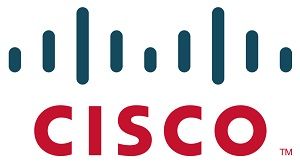Cisco Rolls Videoscape Into The Cloud

Las Vegas – International CES – Hoping to make its multiscreen platform attractive to a broader range of both large and smaller service providers, Cisco System on Monday announced a cloud-focused, more virtualized version of Videoscape that will enable the company to sell it “as a service.”
Cisco said it’s enabling this in part through OpenStack, an open-sourced cloud operating system founded by Rackspace and NASA. Among recent, cable-focused examples, Comcast built its new IP-capable X1 platform on OpenStack, and implemented an OpenStack-based private cloud in tandem with Cisco.
However, Cisco said its new software-as-a-service approach with Videoscape will enable it to continue working with large MSOs that can stand up their own private cloud-based platforms, while also establishing a new approach that can lean on third-party, public cloud infrastructures. That, Cisco claimed, enables it to provide a hosted, more modular version of Videoscape that can be marketed to smaller tier 1 providers, as well as tier 2 and tier 3 video service providers that don’t have the size and resources to do it all on their own.
“The next step is to offer Videoscape as a service,” Joe Cozzolino, Cisco’s senior vice president and general manager, Service Provider Video Infrastructure, told Multichannel News here at an event for press and analysis.
Earlier at the event, Cozzolino said video service providers are under pressure to deploy new products in weeks, versus the six to 18 months it used to take them to get them to market. The ability to accelerate that pace “is what will separate the winners and losers in our business,” he said, noting that emergence over-the-top video “is really setting the pace [for] everyone.”
The refreshed version of the service-provider focused multiscreen platform of Videoscape, first introduced by Cisco at the 2011 CES, includes Videoscape Cloud Software, which is separated from dedicated hardware, Videoscape Cloud Services, which can be bought from Cisco as a service, and Cisco Cloud Fusion for Videoscape, an architecture that lets MSOs sprinkle in Videoscape components without marooning their legacy systems. Cisco said it has also created an HTLM5-based app environment for set-tops and gateways called Videoscape Open UX Foundation.
Operators that are starting to take advantage of Cisco’s new approach include Bouygues Telecom of France, TV Globo of Brazil, and YES, a satellite TV operator in Israel. In the U.S., NBCUniversal will tap it to support its on-site, multiscreen production of the 2014 Sochi Winter Games.
Multichannel Newsletter
The smarter way to stay on top of the multichannel video marketplace. Sign up below.
Cisco also said an undisclosed MSO in Europe that is adopting the Reference Design Kit in set-tops and gateways is using elements of the new, cloudy version of Videoscape to deliver an IPTV service that utilizes the IPv6 addressing scheme.
